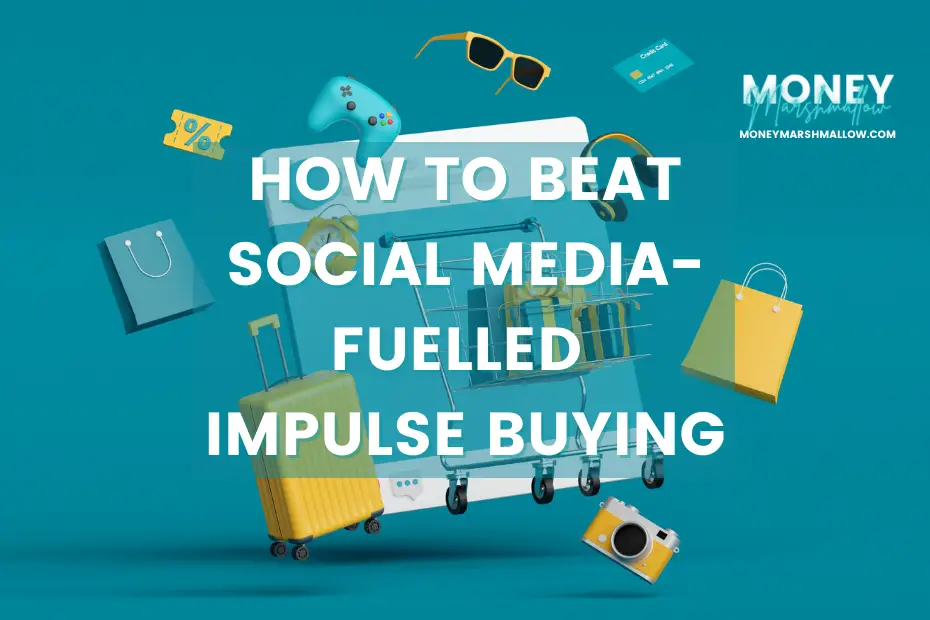The phrase “TikTok made me buy it” is familiar to many. More and more people own items that they bought after browsing on TikTok or Instagram. With endless advertisements and influencer promotions, it’s easy to get caught up in the moment and make impulsive purchases.
However, these purchases can often leave us with buyer’s remorse and an overcrowded house. To help you avoid these tempting purchases, we’ve put together a list of expert tips. By following these tips, you can stop falling into the trap of social media-driven impulse buys and instead make informed and conscious purchasing decisions.
Social media and impulse buying
According to a Bankrate survey from July 2022, half of social media users said they had impulse purchased a product they saw on a platform they use. Even worse, 64% of them said they wished they hadn’t made at least one of those buys.
Science has studied the relationship between social media and impulse buying and found several key factors that influence impulsive buying behaviour on these platforms. Some of these factors include:
Tailored content: Social media algorithms that personalise content for users may show you products that you are likely to be interested in, leading to impulse purchases.
Social media influencers: The content created by social media influencers, especially advertisements, can evoke buying desires and lead to impulse purchases.
Time and place awareness: Browsing social media can lead to a loss of sense of time and place. This reduces or eliminates the consideration phase of the purchasing process, making it easier for users to make impulsive purchases.
Increase in online impulse purchasing: Studies suggest that online impulse purchasing increased during the COVID-19 pandemic. This is partially due to increased usage of social media and increased consumption of media in general. The pandemic also changed consumers’ environment and increased their uncertainty. This then led to a lack of control and anxiety and ultimately triggering impulse buying.
4 tips to fight social media induced shopping urges
Spending money online is easier than ever, but it is possible to keep it in check. Here are four tips to help you resist the urge to buy on impulse.
1. Delay buying to the next day
Impulsive buying is characterised by buying a product after a very short consideration period. Delaying the purchasing process can therefore be an effective way to control impulse buying. When the desire to buy something arises, pause and wait for a moment. A good rule of thumb is to wait at least until the next day to make a purchasing decision. This waiting period may reveal that you don’t actually have a real need for the product.
2. Make an inventory of items you already own
The content provided by TikTok and Instagram makes us want to buy visually pleasing and appearance-related products such as clothing and cosmetics. In many cases, you might already own something similar. While scrolling TikTok, a product may seem like a must-have, but in reality, it’s unlikely to bring you any more joy. If your closets are already stuffed with clothes and cosmetics, go through what you already own. You can then make an informed purchase decision based on your needs rather than wants.
3. Create a wish list
Making a list of items you want may also help control impulsive buying. A wish list helps you to better understand what is truly needed and wanted, and what you can afford to buy.
The wish list can help understand that it’s okay to desire these things, but not all need to be bought. It also helps compare which options are desired the most.
You might be able to buy one or two items from the list, depending on how they fit into your monthly budget. However, it’s important to keep in mind that buying a new lipstick may seem like a small expense, but costs can add up quickly if you make similar small purchases often.
4. Curate your screen time
Online impulsive buying increased during the pandemic as social media use and consumption overall grew. The good news is that social media-fuelled shopping can be reduced by limiting screen time.
In addition to reducing social media usage, content curation is also highly recommended.
If impulsive buying is becoming a problem, consider consuming content and following influencers who don’t trigger these buying impulses. Social media won’t be going away any time soon, so it’s important to understand how it can influence you.
